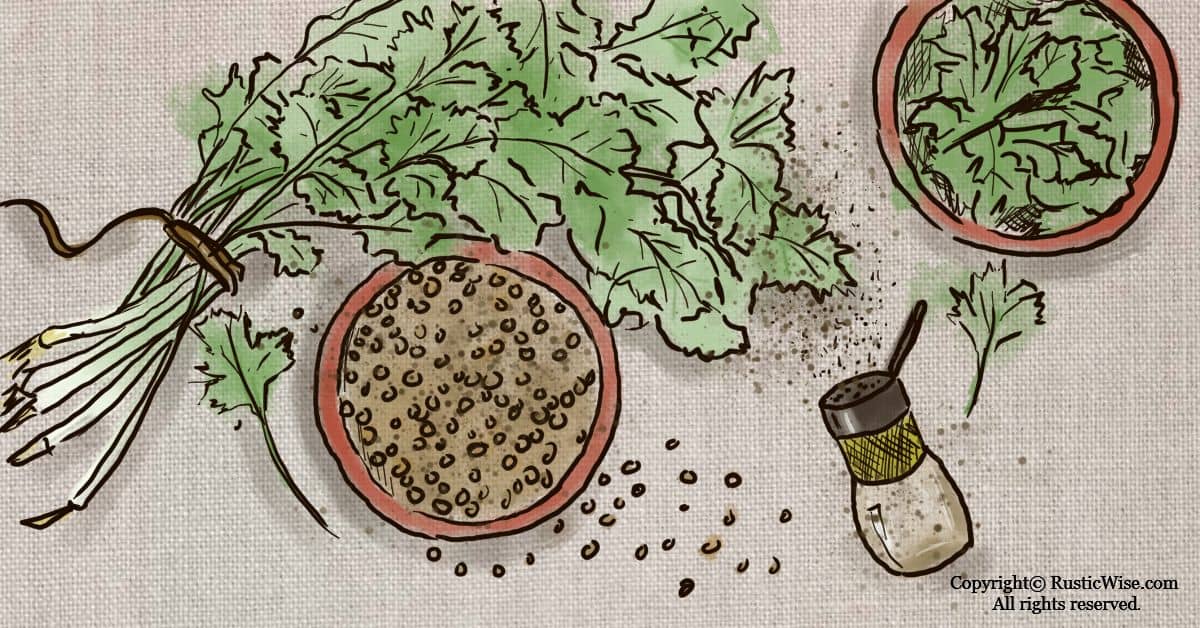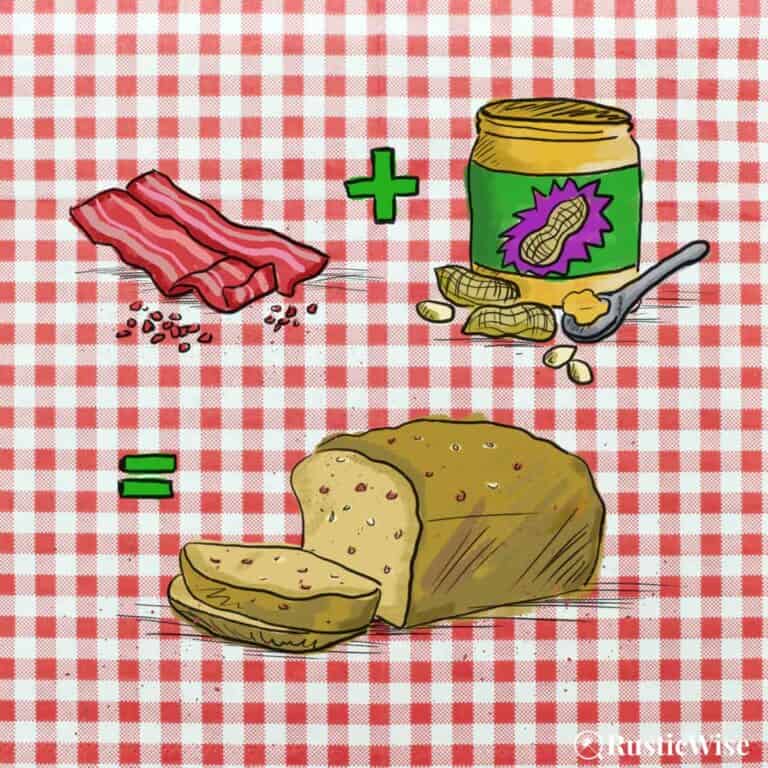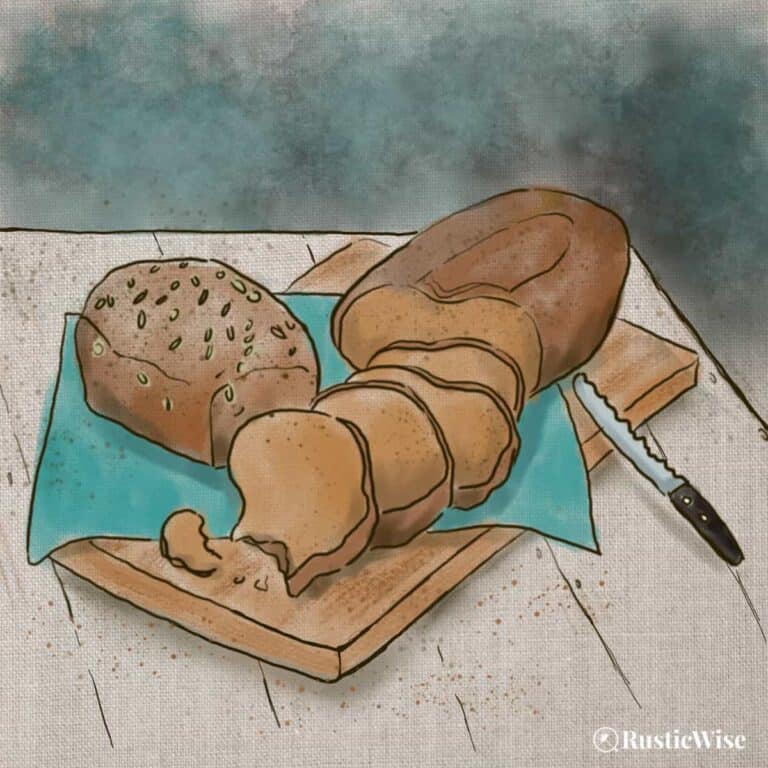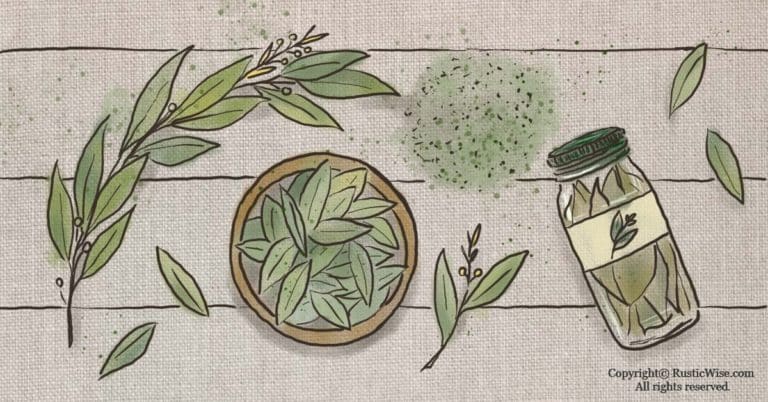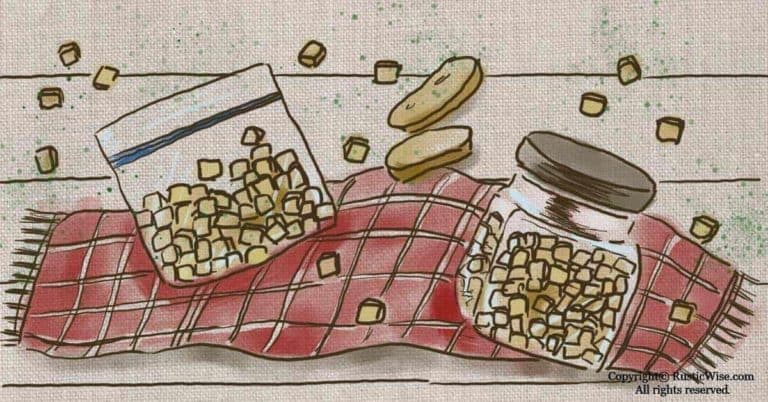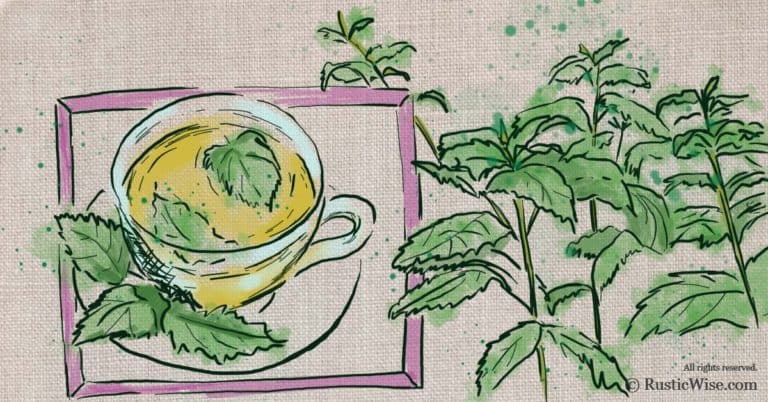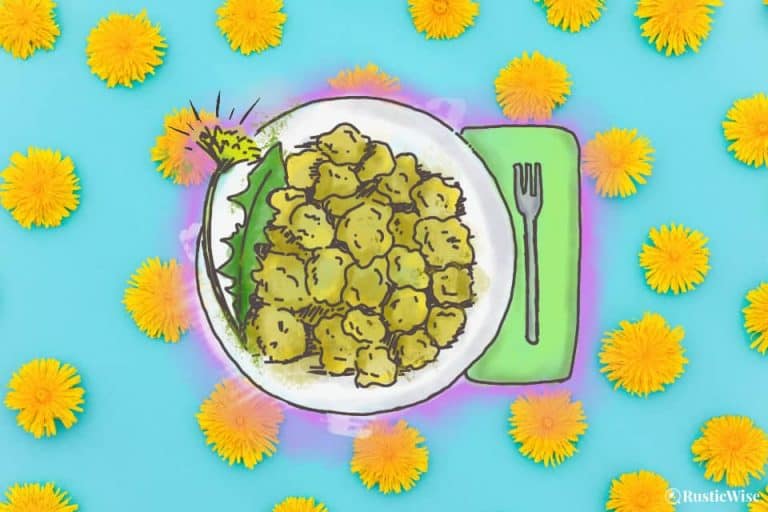Coriander Shelf Life: Tips on Storing Dried and Fresh Coriander to Extend Storage Time
Coriander is an aromatic spice with an earthy, citrusy flavor used to brighten up dishes. Commonly sold as packaged ground coriander seeds, it’s also sold as dried whole seeds, and as a fresh herb. Before you stock up on this versatile spice, it’s good to know about coriander shelf life—and how to extend it through proper storage. The shelf life of coriander varies depending on whether its fresh, or dried in ground or whole form.
Here’s an interesting fact: coriander and cilantro come from the same plant (Coriandrum sativum). The leaves from the coriander plant is known as cilantro in North America, while the seeds that are collected after the plant flowers are called coriander. Other names for the leaves of the coriander plant include dhania and Chinese parsley.
So, is coriander considered a herb or a spice? It’s both actually. The seeds are considered a spice, while the leaves are considered a herb.
Coriander shelf life: ground, whole, and fresh
Depending on the form (ground, whole, or fresh), coriander has different best-before storage times.
The following storage times for dried coriander are based on storage at room temperature, while fresh coriander leaves (aka cilantro) should be refrigerated.
| Form | Storage Time |
|---|---|
| Packaged ground coriander, dried | 2-3 years |
| Packaged coriander seeds (whole), dried | 2-4 years |
| Fresh coriander leaves (aka cilantro) | 2-3 weeks |
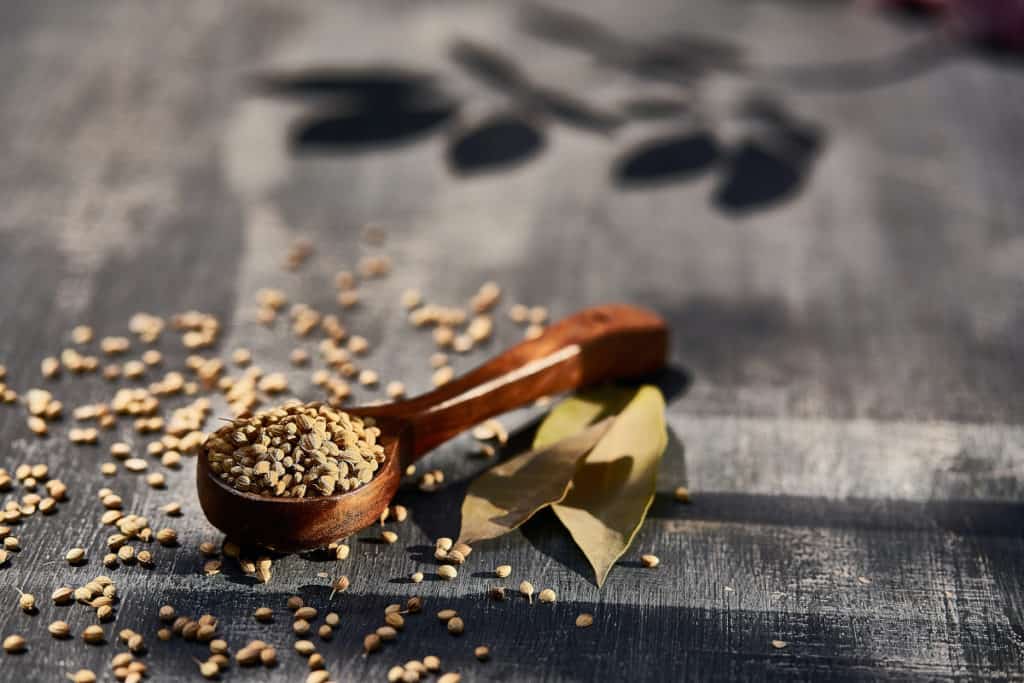
Ideal storage conditions to extend coriander shelf life
How you store coriander (and any herb and spice for that matter) affects its shelf life. You can extend coriander’s shelf life by following a few tips.
How to store dried coriander
- Store in a dry, dark, and cool place: A kitchen cupboard, or a spice rack in the pantry away from the heat of a stove or dishwasher are good places to keep dried coriander. Photodegradation, or the alteration of a substance through the combination of air and light, is the main culprit of spoiled spices.
- Dry: The right humidity ensures a longer, more stable shelf life—keep it at a maximum of 60 percent relative humidity.
- Dark: It’s important to keep coriander away from direct sunlight as it degrades the quality of the spice. Consider storing in opaque containers to further protect it from light.
- Cool: Temperature should be 68 degrees Fahrenheit (20 degrees Celsius) or lower.
- Store in airtight containers: Whether you have whole or ground coriander seeds, keep them in sealed, airtight containers to extend shelf life. The presence of air affects the volatile oils within coriander leading to rapid loss of flavor and aroma.
Tip: If you have a large quantity of dried coriander, consider storing it in the refrigerator. Keep a spice container filled with coriander at room temperature for regular use, and use the refrigerated coriander as a “refill” container. Be careful to keep humidity and condensation to a minimum each time you take the coriander from the fridge to refill your spice container. Sealed, portion-sized Ziploc bags can help with this.
How to store fresh coriander leaves (cilantro)
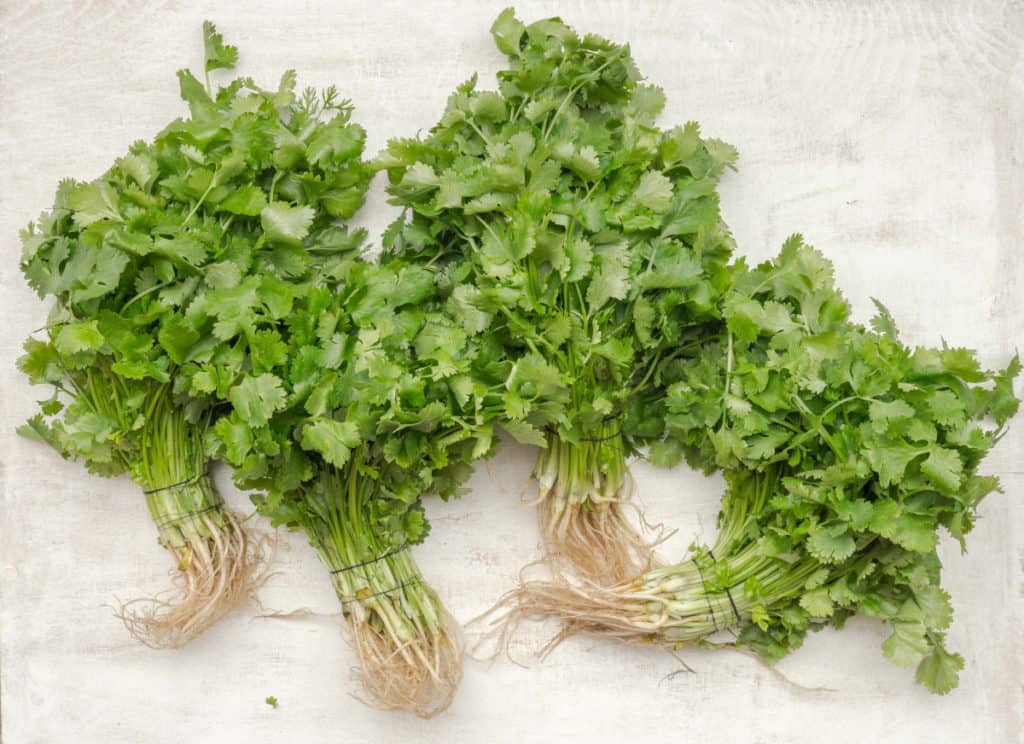
Like other store-bought or garden-grown fresh herbs, coriander leaves have a relatively short shelf life. It should be refrigerated as soon as possible and kept at 40-45 degrees Fahrenheit (4-7 degrees Celsius).
Before storing any fresh herbs, be sure to wash and dry thoroughly. Excess moisture is one of the main reasons for spoilage, so don’t skimp on drying! Use paper towels or a salad spinner to dry washed herbs.
Forget about wilted coriander leaves or cilantro.
With the following methods, you can extend the shelf life of fresh cilantro to 2-3 weeks. To get the most of your fresh coriander, NDTV Food recommends these 3 storage hacks:
Method 1: Cool water soak
- Trim the stems of cilantro.
- Place fresh cilantro in a container with cool water.
- Keep in the fridge with a loosely wrapped plastic bag on top.
- Change the water every few days.
Method 2: Loosely wrapped in paper towels and plastic bag
- Take your clean, dry cilantro leaves and wrap small bundles loosely in clean, dry paper towels.
- Place in a Ziploc bag and keep stored in the fridge.
Method 3: Turmeric dip
Take advantage of turmeric’s natural preservation properties with this method.
- Trim the stems of cilantro.
- Fill a small container with water and add 1 teaspoon of turmeric.
- Place cilantro leaves in the turmeric solution and let it soak for 30 minutes.
- Rinse well and dry thoroughly.
- Line a storage container with paper towels. Place cilantro leaves in the container and place another layer of paper towels on top. Cover with lid. Store in the fridge.
How to tell if your coriander has gone bad
If your dried coriander has reached its best-before date, it may still be safe to use. You just might not want to use it as it’ll be a pale imitation of its former, glorious self.
Store-bought dried coriander will have a “best by” date from the manufacturer. This is just an estimation by the manufacturer as to how long it maintains its optimal freshness.
Dried spices, particularly ground spices lose their flavor and aroma more quickly than whole spices. It’s best to buy dried spices such as coriander in smaller quantities to prevent food wastage.
To determine whether your coriander needs replacing, do a simple sniff-and-taste test. Freshly dried coriander has a more potent aroma, and a deep, earthy, citrus flavor. If it no longer smells or tastes like it should, it’s time to toss it.
Fresh coriander leaves that have gone bad will look wilted and mushy.
How to collect your own coriander seeds
If you have a coriander plant (cilantro) growing at home, you can easily collect your own fresh seeds for home cooking. Once your plant has flowered it produces seeds. The seed heads will start to turn brown—this is when you can trim the seed heads and place them in a paper bag. Allow the plant to dry and the seeds will easily fall off.
Store the seeds in airtight containers.

Author: Theresa Tesolin
Theresa is co-founder of RusticWise. She helps people unleash their inner DIY spirit by encouraging them to get dirty and make or grow something from scratch.

